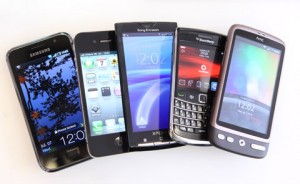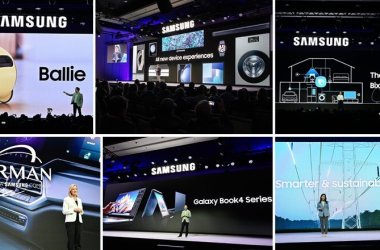 The rest of 2012 will be very challenging for smartphone makers as they struggle to find ways to differentiate their “black slabs,” Richard Kramer, managing partner at Arete Research, said during the opening address at the Open Mobile Summit conference in London.
The rest of 2012 will be very challenging for smartphone makers as they struggle to find ways to differentiate their “black slabs,” Richard Kramer, managing partner at Arete Research, said during the opening address at the Open Mobile Summit conference in London.
Smartphone sales will total between 750 million and 800 million units and add up to over US$230 billion during 2012, according to Kramer. However, Apple, Samsung Electronics and HTC are the only vendors making money, he said.
“This problem is going to get worse in 2012,” said Kramer.
The underlying issue is that the phone vendors have a massive issue with differentiation, while new entrants are expecting lower profit margins. The mobile phone industry has in the past three years moved to making products that for the average consumer all look like flat black slabs, Kramer said.
The end result is that the PC market model is coming to smartphones, according to Kramer. At the same time costs, including patent licensing and marketing, are going up for the phone vendors, which makes the current situation even scarier, he said.
To save themselves, vendors are going to have to change.
“I see this industry moving into what I call the “after hardware” phase. We have done hardware, and we all have high-speed touchscreen smartphones in our pockets,” said Kramer.
One of the ways vendors are hoping to differentiate themselves is by integrating the smartphone with other types of devices, including the TV. For example, Sony is hoping to revitalise smartphone sales by taking advantage of its other consumer electronics products.
But that isn’t going to happen overnight, according to Steve Walker, chief marketing officer at Sony Mobile Communications, who took part in a keynote panel at the Open Mobile Summit.
“We don’t converge everything all at once. The consumer doesn’t go into a mobile phone store and say I’d like to buy convergence, please. But what they do is start with one thing and then connect it to another, and maybe they try a few services, and before you know it things are really starting to work together,” said Walker.
When phones look the same, brand becomes very important when people are standing in the store about to pick a new phone.
But just a well-known brand isn’t enough, according to Walker. The product still needs to live up to the brand image if the consumer is going to buy a phone from the same vendor again, and more importantly recommend it to friends, he said.
The smartphone market isn’t just about high-end smartphones for the U.S. and Europe, according to Kramer. What is happening in emerging markets is just as interesting, and just as consumers in these parts of the world have bought cheap phones they will increasingly buy cheap smartphones, which will cost below $100, going forward.
“Emerging markets will be about 60 percent of smartphone sales next year,” said Kramer.
For example, Vodafone is about to launch the Smart 2, which will offer the same performance as a high-end smartphone did three years ago, according to Vodafone’s group terminals director Patrick Chomet, who also took part in the discussion.
Smartphones in emerging markets will increasingly be co-branded with some sort of Web service, while tablets will become the low-cost computing platform, according to Kramer.
Two terms often used in the smartphone market that Kramer isn’t a big fan of are “commodity” and “open”.
When Kramer hears commodity he thinks of corn, copper and wheat, not something that an R&D department spends nine months to develop; he believes that something that is truly open has become myth. The likes of Apple, Google, Facebook and Amazon aren’t interested in it, according to Kramer.
“None of these guys want open ecosystems,” said Kramer.





